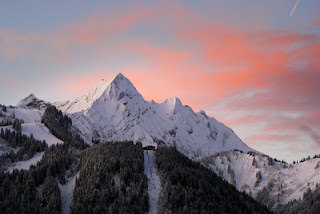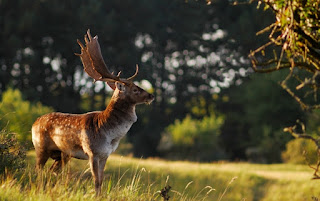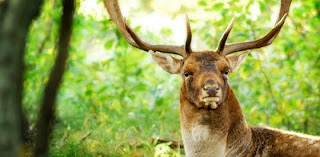Ok, so imagine your windows-based laptop decides to break down.
Not savable, reinstall windows does not solve it (still don’t know why)
and you don’t feel like spending money on a new operating system / laptop.
What do you do? Use an illegal copy of windows? Possibly, but not as stable, can be irritating, and of course it’s not allowed.
So, the only option I had was to switch to Linux.
At the time it felt like a last resort, but I’ve come to like it a lot.
Everything works fine (even found a better replacement for MS Word
than Open / Libre office called Kingsoft Office),
but there is one problem. I’m a photographer, and my entire workflow
was dependent on View NX and Capture NX2 of Nikon.
So what are you gonna do when you can’t develop your RAW images
anymore? The open source universe has quite a lot of options
for RAW developers, but there are two programs that are well known:
Rawtherapee and UFRaw.
I tried them, but never really got to like them. Yet my Linux-photography adventures are not over because I found Lightzone.
Not savable, reinstall windows does not solve it (still don’t know why)
and you don’t feel like spending money on a new operating system / laptop.
What do you do? Use an illegal copy of windows? Possibly, but not as stable, can be irritating, and of course it’s not allowed.
So, the only option I had was to switch to Linux.
At the time it felt like a last resort, but I’ve come to like it a lot.
Everything works fine (even found a better replacement for MS Word
than Open / Libre office called Kingsoft Office),
but there is one problem. I’m a photographer, and my entire workflow
was dependent on View NX and Capture NX2 of Nikon.
So what are you gonna do when you can’t develop your RAW images
anymore? The open source universe has quite a lot of options
for RAW developers, but there are two programs that are well known:
Rawtherapee and UFRaw.
I tried them, but never really got to like them. Yet my Linux-photography adventures are not over because I found Lightzone.
A few years ago Lightzone was a paid program, but when the company behind it went bankrupt Lightzone’s code
was given to the open source community. The heroes behind
the project developed it a bit more, and here is an open source
version of Lightzone.
It’s free and it works on Mac, Windows and Linux (yay!). So how does it stand up against my previous workflow, the one that
I really liked? Lightzone shares more similarities with
was given to the open source community. The heroes behind
the project developed it a bit more, and here is an open source
version of Lightzone.
It’s free and it works on Mac, Windows and Linux (yay!). So how does it stand up against my previous workflow, the one that
I really liked? Lightzone shares more similarities with
Lightroom except for light being used in the name.
There’s the same distinction between a library module and a developing
module. The library module works ok, it’s a bit slow but it works.
Because Lightzone does not have ability like Capture NX2 to read the
picture presets, you have to develop the RAW file from scratch.
Although I do not really like that, it’s not too bad compared to the other
RAW developers.
And of course you can make use of pre-sets.
The first thing Lightzone assumes you want to adjust are your
basic settings, the exposure, colour temperature etc. Which works just fine.
Of course there are there is a dock for the obligatory sliders like
saturation, vibrancy and you can add or subtract certain colours.
But where are the curves? I need to tweak this file.
There’s the same distinction between a library module and a developing
module. The library module works ok, it’s a bit slow but it works.
Because Lightzone does not have ability like Capture NX2 to read the
picture presets, you have to develop the RAW file from scratch.
Although I do not really like that, it’s not too bad compared to the other
RAW developers.
And of course you can make use of pre-sets.
The first thing Lightzone assumes you want to adjust are your
basic settings, the exposure, colour temperature etc. Which works just fine.
Of course there are there is a dock for the obligatory sliders like
saturation, vibrancy and you can add or subtract certain colours.
But where are the curves? I need to tweak this file.
Simple answer, there aren’t any.
Lightzone relies on a system they call the zonemapper which is based on
the zone system. There are a 17 bars that you can drag up or down.
These bars correspond to a zone in your photograph.
At the top right corner you see a version of your photo with 17 shades of
gray that correspond to these bars.
Hover over one of these bars and the shade of gray in the photo lights up.
Lightzone relies on a system they call the zonemapper which is based on
the zone system. There are a 17 bars that you can drag up or down.
These bars correspond to a zone in your photograph.
At the top right corner you see a version of your photo with 17 shades of
gray that correspond to these bars.
Hover over one of these bars and the shade of gray in the photo lights up.
Now you know what area of the photo you’ll be adjusting when you
drag the bar somewhere. And although it takes some getting
used to, it’s really quite a good system. I feel I can be a bit
more precise, and it feels like I have more overview.
Although this system takes some getting used to I feel like it’s
the main selling point of the software (and that it works on Linux). All the adjustments you make are non-destructive,
and can be changed when you go back into your editing process.
You can also change their positions, which basically makes them
act as layers. Speaking of layers, every adjustment
is a layer, because you can change the blending mode, change
their position in the layer stack, and use something like
a layer mask. Unfortunately there are no brushes available
in Lightzone. There are some pretty good selection tools,
but now you have to trace every subject, and I have not yet
found the possibility to change the opacity of the layer mask
regionally. Although this system has some potential, it either
needs some development or Lightzone needs brushes.
drag the bar somewhere. And although it takes some getting
used to, it’s really quite a good system. I feel I can be a bit
more precise, and it feels like I have more overview.
Although this system takes some getting used to I feel like it’s
the main selling point of the software (and that it works on Linux). All the adjustments you make are non-destructive,
and can be changed when you go back into your editing process.
You can also change their positions, which basically makes them
act as layers. Speaking of layers, every adjustment
is a layer, because you can change the blending mode, change
their position in the layer stack, and use something like
a layer mask. Unfortunately there are no brushes available
in Lightzone. There are some pretty good selection tools,
but now you have to trace every subject, and I have not yet
found the possibility to change the opacity of the layer mask
regionally. Although this system has some potential, it either
needs some development or Lightzone needs brushes.
Problems
Although I really like Lightzone some essential features are missing
or just aren’t very good. I already mentioned the lack of brushes,
but at least There’s a good alternative for it. There are no tools available to correct CA.
The sharpening function works ok-ish except for that it introduces
quite a lot of artifacts to the image, (of course) especially at higher ISO’s.
I don’t like the results from the noise reduction function.
You get the water-Painting effect pretty fast, while some noise
still might be visible. Luckily there is other software available
like GIMP (which I absolutely love) to take care of those functions.
But as GIMP only takes JPG’s, I’d rather do it in Lightzone.
or just aren’t very good. I already mentioned the lack of brushes,
but at least There’s a good alternative for it. There are no tools available to correct CA.
The sharpening function works ok-ish except for that it introduces
quite a lot of artifacts to the image, (of course) especially at higher ISO’s.
I don’t like the results from the noise reduction function.
You get the water-Painting effect pretty fast, while some noise
still might be visible. Luckily there is other software available
like GIMP (which I absolutely love) to take care of those functions.
But as GIMP only takes JPG’s, I’d rather do it in Lightzone.
Conclusion
If I’m honest, I use Lightzone out of necessity. I do like the principles
of the software (it’s open-source and free, it works on an open-source
and free operating system, making use of the zone system rather than
curves) it just needs some maturation. When I take the same image and
develop it both in Lightzone and Capture NX2, the image from Lightzone
tends to look better in terms of exposure and colours. However, this is
probably due to laziness as Capture NX2 applies the picture style and
white balance that I had set in my camera. However, in terms of
sharpening,noise reduction and CA correction,
Lightzone gets blown out of the water.
This has led me to do the following: did I shoot portraits or landscape on
an ISO lower than 800? I just leave my Linux system running, and develop
in Lightzone, and sharpen in GIMP. Did I shoot in a dark situation,
(e.g. sports, wildlife etc), I reboot my computer into windows
(wait literally 15 minutes for it to boot) and start up Capture NX2
(and hate windows some more because it’s slow).
of the software (it’s open-source and free, it works on an open-source
and free operating system, making use of the zone system rather than
curves) it just needs some maturation. When I take the same image and
develop it both in Lightzone and Capture NX2, the image from Lightzone
tends to look better in terms of exposure and colours. However, this is
probably due to laziness as Capture NX2 applies the picture style and
white balance that I had set in my camera. However, in terms of
sharpening,noise reduction and CA correction,
Lightzone gets blown out of the water.
This has led me to do the following: did I shoot portraits or landscape on
an ISO lower than 800? I just leave my Linux system running, and develop
in Lightzone, and sharpen in GIMP. Did I shoot in a dark situation,
(e.g. sports, wildlife etc), I reboot my computer into windows
(wait literally 15 minutes for it to boot) and start up Capture NX2
(and hate windows some more because it’s slow).
So would I recommend the software? YES! Yes there are flaws,
and in my view the software has to mature a bit, but it works, I can get
good results out of it, and best of all it’s a FREE CROSS-PLATFORM RAW DEVELOPER. Just try it out, share it with your photo
buddies because it’s a fun piece of software.
and in my view the software has to mature a bit, but it works, I can get
good results out of it, and best of all it’s a FREE CROSS-PLATFORM RAW DEVELOPER. Just try it out, share it with your photo
buddies because it’s a fun piece of software.




































